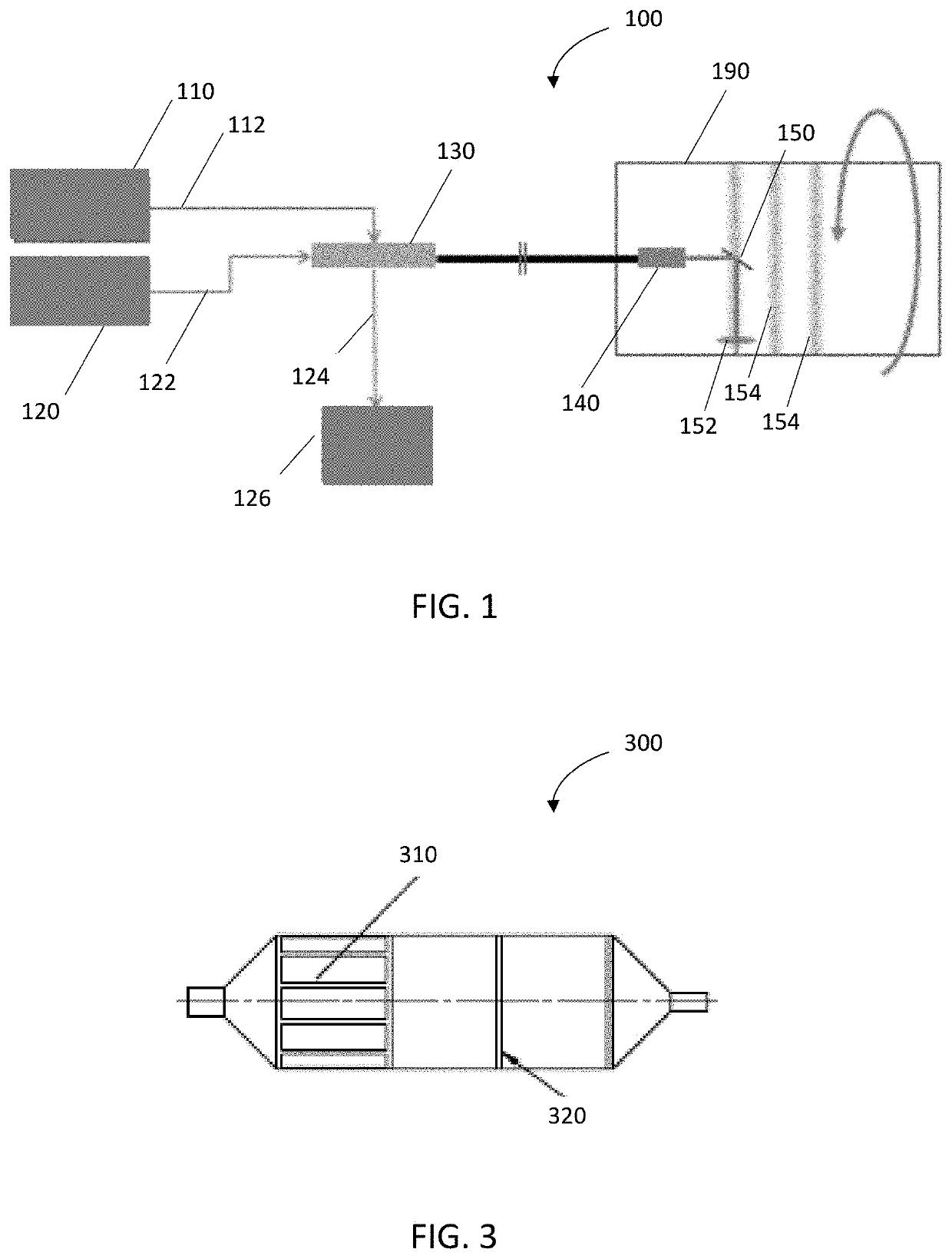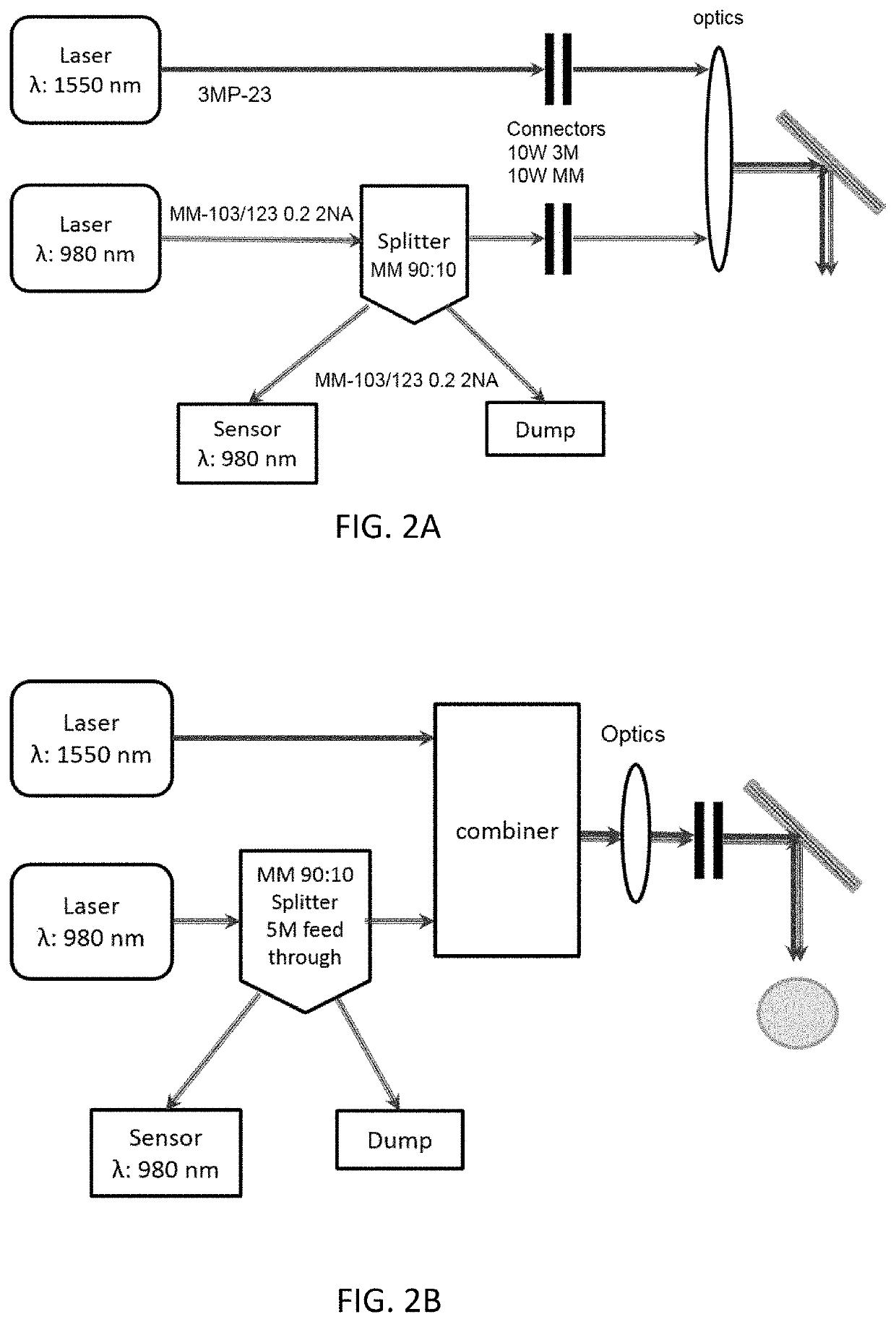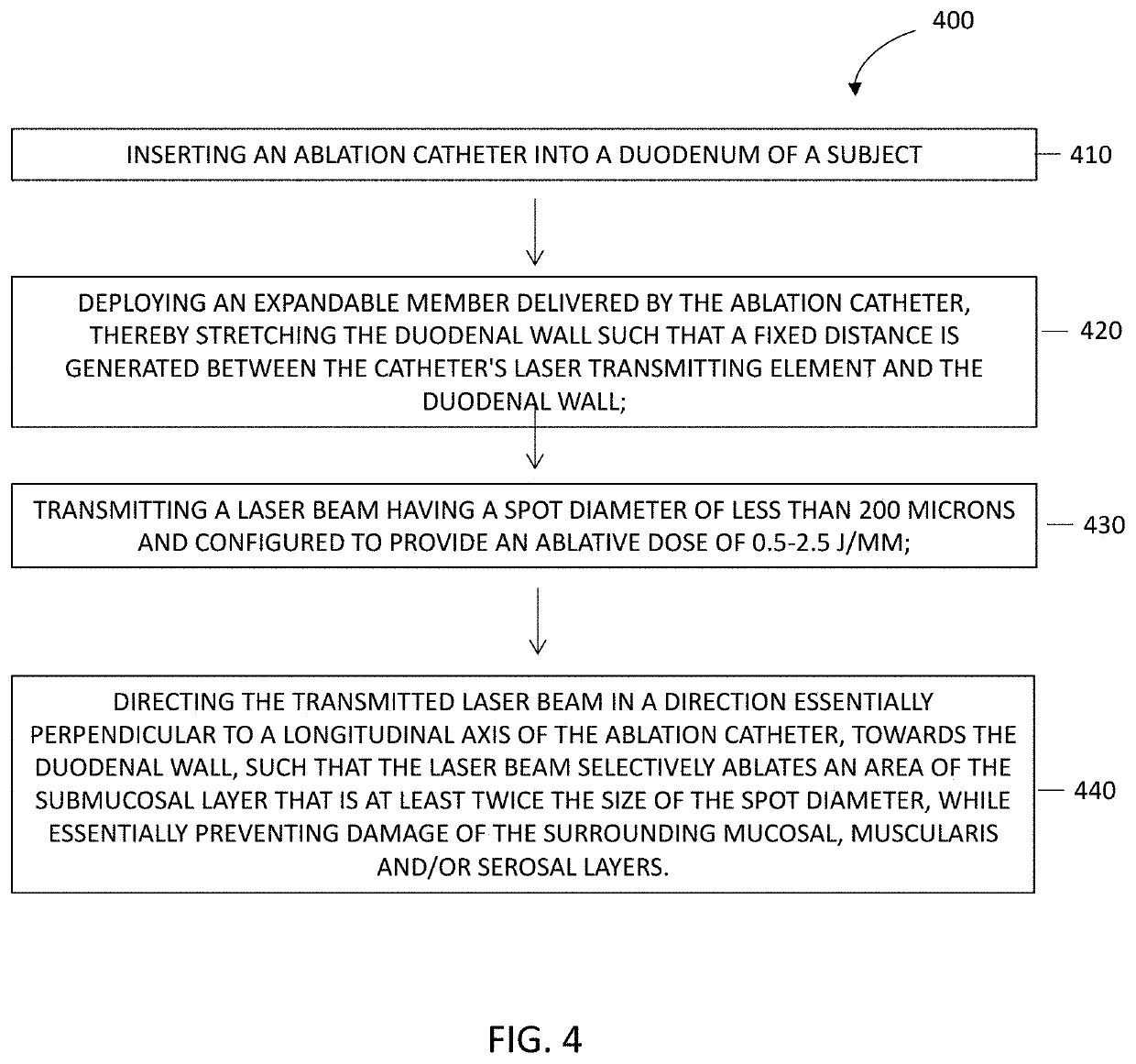Apparatus and method for selective submucosal ablation
a duodenal submucosal and submucosal technology, applied in the field of apparatus and optimization of duodenal submucosal ablation, can solve the problems of high risk, high cost, and inability to optimally solve bariatric surgery, and achieve the effect of preventing damage to the surrounding mucosal, muscularis and/or serosal layers
- Summary
- Abstract
- Description
- Claims
- Application Information
AI Technical Summary
Benefits of technology
Problems solved by technology
Method used
Image
Examples
example 1
blation of Pig Duodenum Using a Multi-Mode (MM) Optical Fiber Generating a Large Spot Diameter
[0086]In-vivo tissue ablation of the submucosa of a domestic pig duodenum was performed using a 1567 nm, 3.6 W MM optical fiber generating a spot diameter of approximately 500 microns. The ablation was performed at a rotational speed of 12 mm / sec, i.e. approximately 6.5 sec for completing a whole circumferential ablation of the duodenal wall which was stretched by a non-compliant balloon, such that the diameter of the ablated circles generated by the emitting optical fiber was approximately 25 mm, thus providing an ablative dose of 0.3 J / mm.
[0087]As seen from FIG. 5, which shows a representative histological staining of the treated duodenal tissue, 2 weeks after treatment, the ablation caused a modification of the mucosal tissue in an area corresponding to the point of impact (encircled), i.e. to the spot diameter of 500 microns, and only little lateral modifications were observed (total ar...
example 2
blation of Pig Duodenum Using a Single-Mode (SM) Optical Fiber Generating a Small Spot Diameter
[0088]In-vivo tissue ablation of the submucosa of a domestic pig duodenum was performed using a 1550 nm, 3.6 W SM optical fiber generating a spot diameter of less than 100 microns. The ablation was performed at a rotational velocity of 2 mm / sec while the duodenal wall was stretched by a non-compliant balloon, such that the diameter of the ablated circles generated by the emitting optical fiber was approximately 20 mm, thus providing an ablative dose of 1.8 J / mm.
[0089]As seen from FIG. 6, which shows a representative histological staining of the treated duodenal tissue, 2 weeks after treatment, the ablation surprisingly caused a modification of the mucosal tissue in an area (encircled) significantly larger than the initial point of impact, i.e. significantly larger than the spot diameter of less than 100 microns. That is, a wide lateral modification of adjacent submucosal tissue was observe...
example 3
blation of Pig Duodenum Using a Single-Mode (SM) Optical Fiber Generating a Small Spot Diameter
[0092]In-vivo tissue ablation of the submucosa of a domestic pig duodenum was performed using a 1550 nm, 3.6 W SM optical fiber generating a spot diameter of less than 100 microns. The ablation was performed at a slower rotational velocity while the duodenal wall was stretched using a non-compliant balloon, such that the diameter of the ablated circles generated by the emitting optical fiber was approximately 20 mm, thus providing an ablative dose of 2 J / mm.
[0093]As seen from FIG. 8, which shows a representative histological staining of the treated duodenal tissue, 2 weeks after treatment, the higher ablative dose likewise caused a modification of the sub-mucosal tissue in an area (encircled) significantly larger than the initial point of impact, i.e. significantly larger than the spot diameter of less than 100 microns, along with changes in the shape of the duodenum wall as a result of an...
PUM
 Login to View More
Login to View More Abstract
Description
Claims
Application Information
 Login to View More
Login to View More - R&D
- Intellectual Property
- Life Sciences
- Materials
- Tech Scout
- Unparalleled Data Quality
- Higher Quality Content
- 60% Fewer Hallucinations
Browse by: Latest US Patents, China's latest patents, Technical Efficacy Thesaurus, Application Domain, Technology Topic, Popular Technical Reports.
© 2025 PatSnap. All rights reserved.Legal|Privacy policy|Modern Slavery Act Transparency Statement|Sitemap|About US| Contact US: help@patsnap.com



